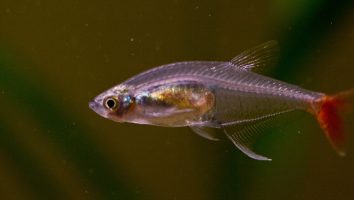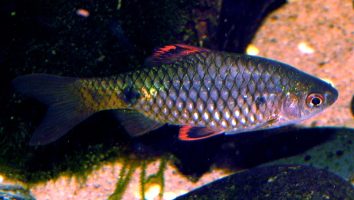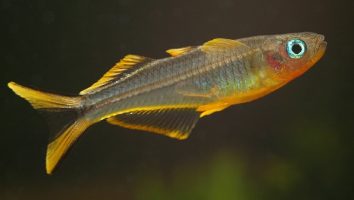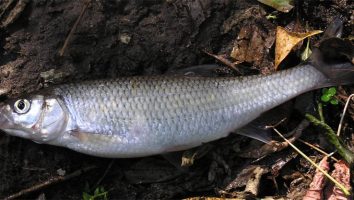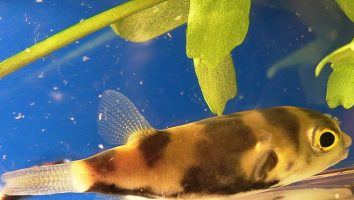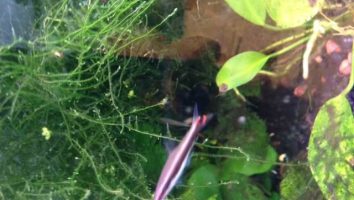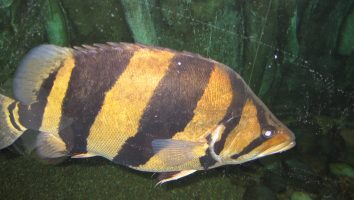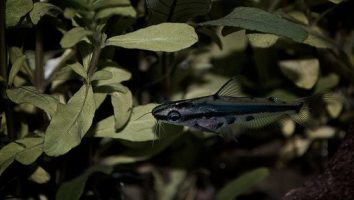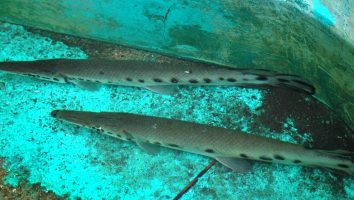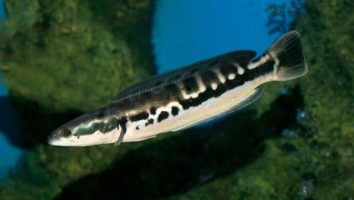The Western rainbowfish is a stunning and relatively easy to care for freshwater fish.
They’re a great option for beginning aquarists, and make a beautiful addition to any community tank.
But there’s a lot of misinformation out there about this fish. We’ve seen everything from “they’re impossible to care for” to “they’re the easiest fish ever”.
So, we made this guide to set the record straight. In it, you’ll learn everything you need to know about Western rainbowfish care. Tank size, diet, lifespan, and more!
Table of contents
Species overview
Western rainbowfish (Melanotaenia splendida splendida) are a subspecies of rainbowfish that are found in a very specific part of Australia: the Kimberley region in the northwest.
They prefer still or slow-moving water with a lot of vegetation. This could be in the form of aquatic plants or just a heavy growth of algae.
Western rainbowfish are omnivores, so their diet consists of both plant and animal matter. In the wild, they’ll eat things like algae, small insects, and crustaceans.
This fish is one of the more popular rainbowfish because of its bright colors and patterns. They are a very popular choice for freshwater aquariums.
Appearance

The Western Rainbowfish is one of the more colorful freshwater fish that you’ll find. As their name implies, these fish have a lot of different colors on their bodies.
The most common colors you’ll see are blues, greens, and yellows. These colors will often have a metallic sheen to them that really makes them stand out.
The colors tend to be brightest on the males of the species and a little more subdued on the females. The colors will also vary depending on the mood of the fish and their environment.
The Western Rainbowfish has a long and thin body shape that’s very hydrodynamic. This helps them swim quite fast when they need to.
Their dorsal and anal fins are both moderately sized and begin about two-thirds of the way back on their bodies.
The caudal fin is forked and slightly taller than the thickest part of their bodies.
Lifespan
Western rainbowfish usually have a lifespan of 3-5 years. However, there have been reports of them living up to 8 years in captivity.
As with most fish, their lifespan will be greatly affected by the quality of care they receive. Things like poor water quality, stress from bad tank mates, or a suboptimal diet can all shorten their lifespan.
Size
The Western rainbowfish is a relatively small fish, growing to a maximum length of around 4 cm (1.6 in).
Tank
Tank Size
The minimum tank size for western rainbowfish is 20 gallons. If you’re looking for a freshwater fish that can fit in an average-sized tank, this is not the fish for you.
If you want to keep two flowerhorn fish in the same tank you’ll want to add at least another 70 gallons to that minimum number if you want them to thrive.
Another reason why you need to provide enough space is for the sake of enrichment and comfort. These fish like to roam and will often run gentle but steady laps around your tank. Giving them a little bit of extra space can go a long way in making sure they can comfortably turn around in the tank.
Water Parameters
The Western Rainbowfish is a freshwater fish that is found in streams, creeks, and rivers in Australia. They are a hardy fish that can adapt to a wide range of water conditions.
The water parameters you need to maintain for Western Rainbowfish are:
- Water Temperature: 72 to 82 degrees Fahrenheit
- pH Levels: 6.5 to 7.5
- Water Hardness: 4 to 14 dGH
- Alkalinity Levels: 2-12 dKH
What To Put In Their Tank
When it comes to setting up the interior of a tank for Western Rainbowfish there are a few things to consider.
The first is the substrate. Since these fish are native to slow-moving rivers and streams, a soft substrate is best. This could be sand, peat moss, or even just a layer of smooth gravel.
The second thing to consider is the plants. These fish are known to nibble on vegetation, so you’ll want to choose something that can withstand a little bit of abuse. Java fern, hornwort, and anubias are all great choices.
The third thing to consider is the decoration. These fish love to have plenty of places to hide, so including driftwood, rocks, and caves is a good idea. Just be sure that any caves you include are big enough for them to comfortably swim in and out of.
And lastly, be sure to include a good filtration system. Western Rainbowfish are known to be messy eaters, so you’ll want to make sure the water is well-filtered and clean.
Common Diseases
The Western Rainbowfish is a pretty hardy fish, but that doesn’t mean they can’t get sick.
The most common illness that affects this species is ich. This is a parasitic infection that will present itself as white spots on the body of your fish.
If left untreated, ich can be fatal. However, it is relatively easy to treat if you catch it early.
The best way to prevent your fish from getting sick is to maintain a clean and stable tank. This will help to keep your fish healthy and reduce the chances of them getting sick.
Behavior & Temperament
The Western rainbowfish is a schooling fish, which means it does best when it’s kept with a group of others. A school of rainbowfish will often swim together in harmony, only breaking off to chase their own reflection in the glass or explore a new part of the tank.
For the most part, these fish are peaceful. They might chase other small fish, but they’re not aggressive enough to do any real damage.
The only time you might see aggression from a Western rainbowfish is during spawning season. The males will become more territorial and might chase away any fish that come too close to their eggs.
Other than that, these fish are relatively low-maintenance. They’re easy to care for and make a great addition to any peaceful community tank.
Tank Mates
Western rainbowfish are a great addition to any community tank. They’re peaceful, have beautiful colors, and stay relatively small.
The only potential issue with these fish is that they like to occupy the middle and top levels of the water column. If you don’t have enough space, they might get bullied by larger fish.
Other than that, there are tons of different tank mates that work well with Western rainbowfish. Here are some of the best:
- Neon Tetra
- Cardinal Tetra
- Ghost Shrimp
- Rummy Nose Tetra
- Cherry Shrimp
- Guppy
- Platy
- Mollies
- Swordtails
Breeding
Western rainbowfish are easy to breed as long as you have a few key things in place. First, you need to have a ratio of two males to every female. Second, the tank should have plenty of live plants. The plants provide both shelter and food for the fry.
It’s also a good idea to have some kind of spawning mop or grass in the tank. The female will lay her eggs on these surfaces.
To trigger spawning, you need to do a large water change. This simulates the rainy season in their natural habitat. After the water change, the fish will start to spawn.
The female will lay her eggs on the plants or mops. The male will then fertilize them. Once the eggs are fertilized, the male will guard them.
The eggs will hatch in about two weeks. At that point, you can remove the adults and start feeding the fry baby brine shrimp.
Conclusion
The Western Rainbowfish is an amazing fish that is perfect for the beginner aquarist. They are very easy to care for and will do well in a community tank.
They are also a very colorful fish that will add some beauty to your tank. We highly recommend this fish to anyone who is looking for a low-maintenance addition to their aquarium.

